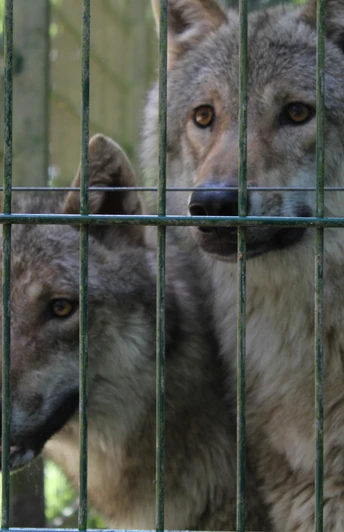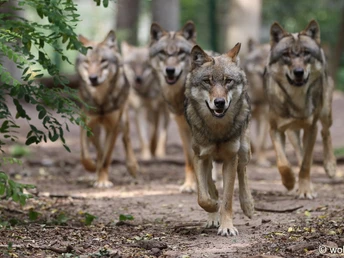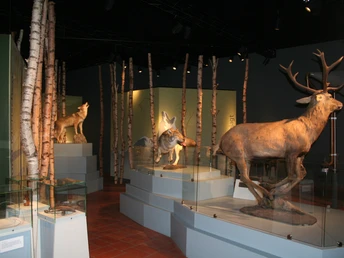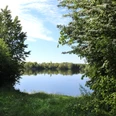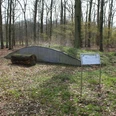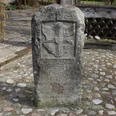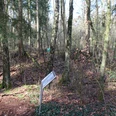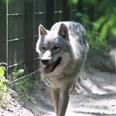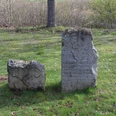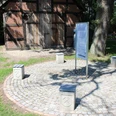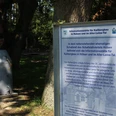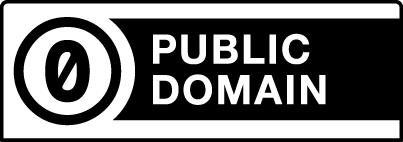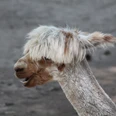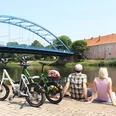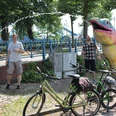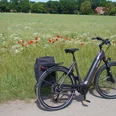- 2:58 h
- 47.20 km
- 20 m
- 25 m
- 15 m
- 34 m
- 19 m
- Start: Barracks road
- Destination: Barracks road
The wolf was originally widespread throughout the northern hemisphere. However, conflicts between wolves and humans have greatly reduced the population and range of the species. After an absence of over 100 years, wolves have once again become established in the wild in Germany. The animals, which have been strictly protected by the Federal Nature Conservation Act since 1980, are migrating from neighboring countries. In 2000, the first wolf pups for a long time were born in Lusatia (Saxony). They are now present in several federal states, including Lower Saxony.
The approximately 100-kilometre-long, signposted "Wolfstour" cycle tour with its information boards is divided into a northern and a southern route. It aims to shed light on the current topic "The return of the wolf to Germany". It leads from the Wolfcenter Dörverden through large areas of forest, moorland and heathland as well as extensive grassland areas around the Lichtenmoor, the former hunting ground of the "Würger vom Lichtenmoor", to the Wolfstein in the Schotenheide near Ahlden (Aller), where the "Würger" was shot in 1948. This was a large male wolf. The hunting ground assigned to the "Würger" was an area of around 30 square kilometers in the districts of Neustadt, Heidekreis and Nienburg/Weser with a center in the sparsely populated Lichtenmoor.
Information boards cover topics such as "Why were wolves hunted?", "The return of wolves", "What do wolves eat?", "The difference between dogs and wolves", "Wolf biology" and "Wolves and humans - what to do in the event of an encounter?". The wolf tour is designed for young and old alike, from the information content of the boards to the topography of the route. As it is a circular route, the starting point can be chosen flexibly. The Wolfcenter Dörverden is a very good starting point. The entire 100 km tour can also be completed in two day stages thanks to the connecting route.
In Rodewald (Wolfstour Süd route), a detour to the local history museum is signposted. There is an exhibition on the subject of "The Strangler of the Lichtenmoor".
Wolfcenter Dörverden - Experience all about the wolf
The Wolfcenter Dörverden does public relations work for the population about wild wolves, which are spreading again independently in Germany. The team of employees shows the many visitors to the Wolfcenter the opportunities, risks and challenges associated with their spread. Several times a day, visitors learn all about the biology and ecology of wolves in a one-hour guided tour. Daily show feedings round off the program. In addition, two large exhibitions with real wolf specimens, amazing photographs and hands-on exhibits provide an insight into the life of these exciting animals. Two nature playgrounds and a water playground also provide space for younger guests to run around, while the "Wolfsrevier" restaurant serves freshly prepared food and treats. If you want to stay the night, there are plenty of opportunities to listen to wolves howling at night in the Indian tipis between the enclosures, guest rooms and two exclusive tree house hotels.
Wolfcenter GbR
Kasernenstr. 2, 27313 Dörverden-Barme
Tel. (04234) 94311-0
info@wolfcenter.de, www.wolfcenter.de
Der Würger vom Lichtenmoor.
The Würger vom Lichtenmoor is the name of a fictitious predator that is said to have killed numerous domestic and wild animals around the Lichtenmoor north-east of Nienburg/Weser in Lower Saxony in 1948. The search for the strangler and speculation about which animal it might be was accompanied by rapidly growing media interest, which in the meantime spread throughout Germany, and led to large-scale but unsuccessful hunts. A wolf shot by a hunter in August 1948 revived the story, which had already received little attention at the time.
Reports on the number of prey animals killed, the wounds and other evidence make it clear that the vast majority of cases were poaching and illegal slaughter, which was not uncommon due to the meat shortage and food rationing in the post-war period. It is striking that the number of cases attributed to the strangler fell sharply after the currency reform on June 21, 1948 and the resulting easing of the situation on the food market
A wolf is said to be the strangler.
On 27. On August 27, 1948, when the number of animal losses attributed to the "strangler" had already fallen sharply, 61-year-old farmer Hermann Gaatz from Eilte (Heidekreis) shot a wolf from a high seat in the Schotenheide, which was stalking some deer. The following day he found the animal, a six-year-old male, which was 1.70 meters long, 85 centimeters high at the shoulder and weighed 95 pounds. At the spot in the Schotenheide near Ahlden (Aller) where the wolf was killed, the Lower Saxony Hunting Association had a "wolf stone" erected as a memorial. (Source: Wikipedia)
Here you can find the Wolfstour-Süd.
The tour can also be found at Komoot.
Safety information:
The approximately 100-kilometre-long, signposted "Wolfstour" cycle tour with its information boards is divided into a northern and a southern route. It aims to shed light on the current topic "The return of the wolf to Germany". It leads from the Wolfcenter Dörverden through large areas of forest, moorland and heathland as well as extensive grassland areas around the Lichtenmoor, the former hunting ground of the "Würger vom Lichtenmoor", to the Wolfstein in the Schotenheide near Ahlden (Aller), where the "Würger" was shot in 1948. This was a large male wolf. The hunting ground assigned to the "Würger" was an area of around 30 square kilometers in the districts of Neustadt, Heidekreis and Nienburg/Weser with a center in the sparsely populated Lichtenmoor.
Information boards cover topics such as "Why were wolves hunted?", "The return of wolves", "What do wolves eat?", "The difference between dogs and wolves", "Wolf biology" and "Wolves and humans - what to do in the event of an encounter?". The wolf tour is designed for young and old alike, from the information content of the boards to the topography of the route. As it is a circular route, the starting point can be chosen flexibly. The Wolfcenter Dörverden is a very good starting point. The entire 100 km tour can also be completed in two day stages thanks to the connecting route.
In Rodewald (Wolfstour Süd route), a detour to the local history museum is signposted. There is an exhibition on the subject of "The Strangler of the Lichtenmoor".
Wolfcenter Dörverden - Experience all about the wolf
The Wolfcenter Dörverden does public relations work for the population about wild wolves, which are spreading again independently in Germany. The team of employees shows the many visitors to the Wolfcenter the opportunities, risks and challenges associated with their spread. Several times a day, visitors learn all about the biology and ecology of wolves in a one-hour guided tour. Daily show feedings round off the program. In addition, two large exhibitions with real wolf specimens, amazing photographs and hands-on exhibits provide an insight into the life of these exciting animals. Two nature playgrounds and a water playground also provide space for younger guests to run around, while the "Wolfsrevier" restaurant serves freshly prepared food and treats. If you want to stay the night, there are plenty of opportunities to listen to wolves howling at night in the Indian tipis between the enclosures, guest rooms and two exclusive tree house hotels.
Wolfcenter GbR
Kasernenstr. 2, 27313 Dörverden-Barme
Tel. (04234) 94311-0
info@wolfcenter.de, www.wolfcenter.de
Der Würger vom Lichtenmoor.
The Würger vom Lichtenmoor is the name of a fictitious predator that is said to have killed numerous domestic and wild animals around the Lichtenmoor north-east of Nienburg/Weser in Lower Saxony in 1948. The search for the strangler and speculation about which animal it might be was accompanied by rapidly growing media interest, which in the meantime spread throughout Germany, and led to large-scale but unsuccessful hunts. A wolf shot by a hunter in August 1948 revived the story, which had already received little attention at the time.
Reports on the number of prey animals killed, the wounds and other evidence make it clear that the vast majority of cases were poaching and illegal slaughter, which was not uncommon due to the meat shortage and food rationing in the post-war period. It is striking that the number of cases attributed to the strangler fell sharply after the currency reform on June 21, 1948 and the resulting easing of the situation on the food market
A wolf is said to be the strangler.
On 27. On August 27, 1948, when the number of animal losses attributed to the "strangler" had already fallen sharply, 61-year-old farmer Hermann Gaatz from Eilte (Heidekreis) shot a wolf from a high seat in the Schotenheide, which was stalking some deer. The following day he found the animal, a six-year-old male, which was 1.70 meters long, 85 centimeters high at the shoulder and weighed 95 pounds. At the spot in the Schotenheide near Ahlden (Aller) where the wolf was killed, the Lower Saxony Hunting Association had a "wolf stone" erected as a memorial. (Source: Wikipedia)
Here you can find the Wolfstour-Süd.
The tour can also be found at Komoot.
Safety information:
- Throughout the entire tour, please note that the cycle paths are used at your own risk
- No guarantee is given for the usability of the cycle paths
- In cities, increased attention is generally required
- Please use existing cycle paths
- Dangerous spots must be expected on the tour, e.g. bollards, barriers to traffic
- .bollards, barriers and unsecured crossings of main roads - this advice applies in particular to cycling families with small children.
Waypoints
Start
Good to know
Best to visit
suitable
Depends on weather
Author
Mittelweser-Touristik GmbH
Lange Straße 18
31582 Nienburg/Weser
Organization
Mittelweser-Touristik GmbH
License (master data)
Mittelweser-Touristik GmbH
Nearby
